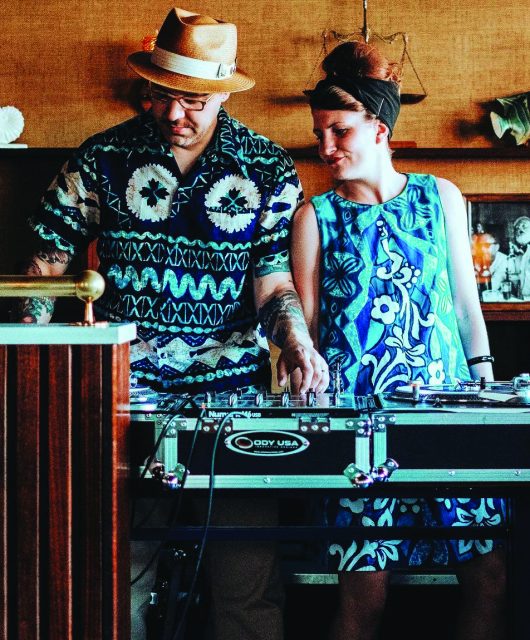Performer, songwriter, arranger, innovator – Ray Charles did them all while mastering the vocabulary of rock’n’roll and becoming the father of soul. Randy Fox chronicles the life and times of the man they called… The Genius
Ray Charles was 12 years old when he decided there were three things he never wanted to rely upon: a dog, a cane and a guitar. As he explained in his 1978 autobiography: “In my brain, they each meant blindness and hopelessness… It wasn’t that I wanted to fool myself. Hell, I knew I was blind as a bat. But I didn’t want to have to depend upon anyone or anything other than myself.”
It may sound like a case of vanity over wisdom, but individuality and independence were the principles that ruled Ray Charles’ life and music. Charles was never an elitist when it came to music. He understood perfectly that “artistic integrity” didn’t fill your stomach or keep you warm on cold nights. The key to success was to entertain audiences, but just because “common sense” said audiences would reject a new or radical idea, it didn’t mean they would. The greatest innovations and successes always challenge the norms. Ray Charles overcame personal tragedy, crushing poverty, drug addiction and the physical handicap of blindness, but his personal musical vision made him a star and led others to declare him a genius.
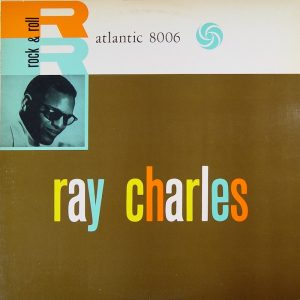
Artistic Integrity
“Even compared to other blacks in Greenville,” Charles wrote nearly four decades after his childhood, “we were on the bottom of the ladder looking up at everyone else. Nothing below us ’cept the ground.” There was no hyperbole in that statement. Ray Charles Robinson was born on 23 September 1930, the son of Bailey Robinson, a labourer in Greenville, Florida, and Aretha Williams, a teenage orphan informally adopted by Robinson’s mother. Charles was born in Albany, Georgia, to avoid the scandal resulting from his father already being married to another woman, but shortly after Charles’ birth, Aretha returned to Greenville, and Bailey Robinson left his wife for her.
Robinson’s role as a bread-winner for his family didn’t last long, for shortly after the birth of his second son, George, he abandoned his family. Meanwhile, Aretha cared for her two boys with the help of Robinson’s first wife, Mary Jane Robinson, as both women eked out a living as sharecroppers.
From a very early age Charles was fascinated by music, and his interest was nurtured by the intense choral singing in weekly church services. He also developed a fascination with mechanical devices. Those interests came together with a non-sanctified twist at the age of three, when he discovered the jukebox and upright piano in Wylie Pitman’s Red Wing Café in Greenville. The jukebox delivered the sounds of jazz and blues, and the piano provided Charles with a means to recreate that music when Mr Pitman began teaching him the basics of boogie woogie piano.
Childhood Tragedy
Although he would later recall much of his early childhood idyllically, tragedy struck when he was five years old. First, his brother accidentally drowned while playing in a washtub. Soon afterwards Charles began to lose his sight, possibly due to childhood glaucoma. By the age of seven, Charles’ vision loss was complete and his mother enrolled him in the Florida School for the Deaf and the Blind in St Augustine. This was where he lived for the next eight years, other than visits home for the Christmas holidays and summer breaks.
Ray proved to be an apt pupil, and quickly learned braille. He also studied classical piano and learned to score musical arrangements for multiple instruments. A favourite during the school’s weekly assemblies, he often performed popular songs. He also became a fervent fan of pop, blues and country music, in particular the Grand Ole Opry radio programme, which he listened to each Saturday night.
In the spring of 1945, tragedy struck again when his mother passed away suddenly from an unknown ailment. He briefly returned to school in the autumn, but was expelled for a prank he played on a teacher. He decided to strike out on his own and play music professionally. Over the next few years, Charles struggled as a musician in Jacksonville and Orlando, Florida – playing piano and singing in various bands, and also building a reputation as a talented musical arranger.
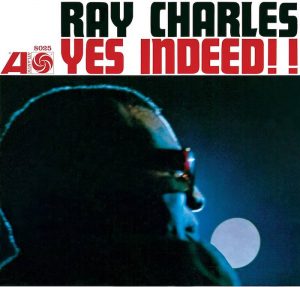
Travelling Man
In 1947, he moved to Tampa, Florida, where he divided his time between playing piano for an R&B dance band called Charles Brantley’s Honeydippers and as the only black member of the Western swing combo, the Florida Playboys. By this point, Charles was patterning his singing style after the smooth crooning style of Nat King Cole and Charles Brown, two artists who ruled the R&B charts in the years immediately following World War II.
By March 1948, Charles was ready for a change, and moved as far away from Florida as possible, choosing Seattle, Washington, as his destination. Once he arrived he soon found work in the local nightclubs and reunited with his friend Gossie McKee, who had also moved up from Florida. In addition to forming the McSon Trio with guitarist McKee and bass player Milton Garrett, Charles also played with future rock’n’roll producer Robert “Bumps” Blackwell’s band where he met 15-year-old trumpeter Quincy Jones. It was during his time in Seattle that Charles dropped the “Robinson” from his stage name in order to reduce confusion with the popular boxer Sugar Ray Robinson. In addition to the new stage name, Charles also began using heroin, an addiction that continued for many years.
While in Seattle, Charles soon came to the attention of Jack Lauderdale, owner of the Los Angeles-based Down Beat Records. Lauderdale signed Charles to the label and released his first single, Confession Blues, in early 1949. The record was an immediate success, rising to the No. 2 position on the Billboard R&B chart. Charles continued to record for the label (soon to be renamed Swing Time Records) and relocated to Los Angeles in 1950.
Boogie Woogie Star
By early 1952, Jack Lauderdale had over-extended Swing Time’s resources and cut several artists from the label’s roster, including Ray Charles. Herb Abramson and Ahmet Ertegun of Atlantic Records jumped at the chance to sign him for a mere $2,500. Both men believed Charles had a larger range than his previous recordings for Swing Time, but neither realised just how great Charles’ potential was.
For his first Atlantic session in September 1953, Charles was backed by Atlantic’s go-to arranger and bandleader, Jesse Stone, along with some of the best R&B sessionmen in New York. Stone had produced hits for several other Atlantic artists, and he was ready to give the same type of musical guidance to Charles.
Two things quickly became apparent: the musical range that Abramson and Ertegun had believed in was obvious, and Charles didn’t require musical guidance. Charles tore through three numbers reflecting the styles of Nat King Cole, Charles Brown, and Louis Jordan respectively but also added unique touches like the bebop jazz piano fills on the Cole-esque Roll With My Baby, and the offbeat, insistent rhythm of the Brown-ish Jumpin’ In The Morning.
While those songs were spiced with creative embellishments, the fourth song from the session, The Sun’s Gonna Shine Again, was pure Ray Charles – combining the grit of the blues with passionate gospel-tinged vocals that soared to heavenly heights. Eight months later Charles returned to the studio to record six more songs that amply displayed his versatility and emerging personal style. It was evident in both the intimate blues of Losing Hand, the manic boogie woogie of Mess Around, and the chugging rhythm of It Should Have Been Me.
Creative Talent
Both the music and sales of his records proved that Atlantic’s investment in Charles was wise, but the full power of his creative talents had yet to be tapped. When not on the road, Charles spent most of 1953 living in New Orleans and playing extended engagements at the Pelican Club and Dew Drop Inn. He also befriended bluesman Guitar Slim, and in October 1953 Charles arranged and produced the song The Things That I Used To Do for Slim on Specialty Records. Charles’ fusion of gospel and the blues, combined with the world-weary tone of Guitar Slim’s lyrics, made the resulting record a masterpiece. Released in December 1953, the single zoomed to No. 1 on the R&B chart and then crossed over to the pop charts, rising to No. 23 and becoming the biggest-selling R&B record of 1954.
Still following his sense of wanderlust, Charles moved to Dallas, Texas, in 1954, where he took the major career step of forming his own band. Up to this point he had shared bands with tour-mates or worked with pick-up musicians, but he realised he needed his own band to bring his personal music vision into focus.
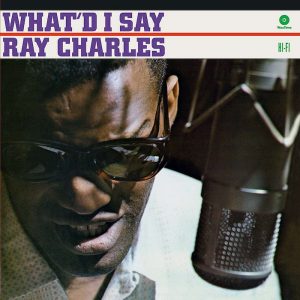
Blues Meets Gospel
By November 1954, Ray Charles was ready to capture that vision on wax, and he invited Atlantic’s Ahmet Ertegun and Jerry Wexler to meet him in Atlanta, Georgia, to hear his new band and his new material. Both men were surprised to find how far Charles’ ideas had advanced since his last session. As Jerry Wexler later recalled: “He counted off and led into an amazing succession of songs. I was stunned… I knew something fantastic had happened.”
Wexler and Ertegun quickly arranged a session at the studios of Atlanta radio station WGST. The standout song by far was I Got A Woman, inspired by the gospel tune It Must Be Jesus by the Southern Tones, with new lyrics co-written by Charles and his trumpet player Renald Richard. It was Charles’ most blatant attempt at combining the lust of the juke joint with the passion of the church.
Taking The Market By Storm
While many R&B artists had borrowed small elements of traditional gospel music for worldly music over the years, the general view of most African-Americans was that the music of the Lord and the music of Satan were mutually exclusive domains. I Got A Woman defied that barrier like a congregation of fornicating revivalists drunk on sacramental wine.
Released as a single the week of Christmas 1954, Billboard magazine noted in their 8 January 1955 issue that I Got A Woman was taking the market by storm in Atlanta, Nashville and other Southern cities. Within weeks it was a hit across the US, rising to No. 1 on the R&B chart. It kicked off an amazing year for Charles. By the end of 1955, he had scored six Top 10 R&B hits — all four songs from the Atlanta session and two more cut in April 1954 in Miami, Florida. In addition, I Got A Woman became a favourite of the new breed of white rock’n’rollers, especially after Elvis covered it at his first RCA session in January 1956 — a move that proved to be a financial windfall for Charles.
Pioneering Sound
The massive success of Elvis Presley in 1956 was a hurricane that swept through the entire record industry. The new rock’n’roll sound wasn’t just a case of certain R&B records appealing to a segment of white teenagers, it was a phenomenon unto itself. The key to a really big pay-off was to purposely target the teenage market, and R&B artists who had built careers on songs aimed at young adults refocused their aim on teenage love, sock hops and school days.
Despite the lure of big sales, Charles had no interest in dialing back the maturity of his music. Instead he emphasised the grit and soulfulness with songs that commingled the bar and the pulpit. Drown In My Own Tears and Hallelujah I Love Her So didn’t cross over to the teenybopper crowd but became huge sellers among blacks and began to attract the attention of white jazz and pop fans. Both Ertegun and Wexler realised that Charles was a unique and singular talent and allowed him a greater degree of freedom in the studio than any other Atlantic artist.
Atlantic’s faith in the artist they referred to as “The Genius” proved to be well-founded. Between 1957 and 1959, Charles recorded small combo jazz, big band swing and orchestral pop, along with continuing to explore his pioneering soul sound. He expanded the church influences by recruiting the members of the R&B girl group the Cookies for his band. As the Raelettes, they added call-and-response intensity to his music that was the perfect contrast to his rough, scratchy vocals.
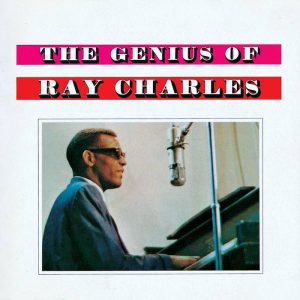
R&B Grit
All these elements came together perfectly in What’d I Say — six-and-a-half minutes of R&B grit, jazz groove, Latin rhythm and transcendental spiritual ecstasy powered by the pleasures of the flesh. Released in the summer of 1959, the single sparked controversy, as many radio stations banned it. Despite the protests, What’d I Say hit No. 1 on the R&B charts, No.6 on the Hot 100 and sold over one million copies. The LP What’d I Say – rushed out to capitalise on the single’s success – became Charles’ first gold album.
Charles was riding high, but his contract with Atlantic was nearing its end. ABC-Paramount made an unprecedented offer: a $50,000 annual advance, a higher than average royalty rate, and eventual ownership of his masters. They viewed the deal as a way to shore up their weak R&B division and Charles proved ready for the task, scoring a string of R&B and pop hits for the label in 1960 and 1961. As with Atlantic, they got plenty for their money.
With Charles’ success in album sales and the demand for his live appearances increasing, he stepped away from writing his own songs and arrangements while still maintaining absolute control over the material he chose to record. During the first three years of Charles’ contract, he continued to explore jazz, blues and orchestral pop. He gained a larger audience among white music fans through hit concept albums like The Genius Hits The Road (1960) and critically acclaimed LPs like his 1961 Genius + Soul = Jazz, with arrangements written by his old friend Quincy Jones.
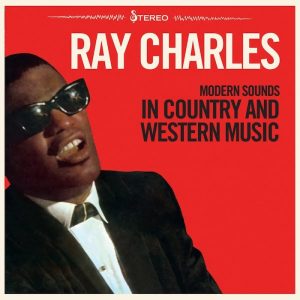
Bold Move
His boldest move came in 1962 with the release of Modern Sounds In Country And Western Music, an album that expressed his love for country and placed some classic songs in an entirely new context. The album hit No. 1 in the pop charts and spawned four hit singles; importantly, it introduced Charles to a new audience while pushing many jazz, R&B, and pop fans to re-examine their attitudes toward country music.
By 1964, Charles was well-established as one of the most successful and artistically independent entertainers in the world, despite having been a heroin addict for over 16 years. On a trip back from Canada he was busted by US customs for possession of marijuana and heroin. Although he had escaped serious consequences from two earlier busts, he was now facing the possibility of an extended prison sentence. Charles checked into St. Francis Hospital in Lynwood, California, determined to beat his habit. Based on his decision and the report from his doctors, he received a five-year suspended sentence and never returned to the drug.
As a result of his recovery and legal troubles, Charles spent most of 1965 away from the music business. Ray returned to the studio and the road the next year, but the British Invasion and the rise of hard rock had dramatically altered the musical landscape. He continued to be the musical polymath, freely working in a variety of genres and scored both pop and R&B hits.
Father Of Soul
As the 1970s wore on, Ray Charles’ hits gradually faded away but he became a beloved and revered figure around the world. He published his candid and earthy autobiography, Brother Ray: Ray Charles’ Own Story (co-written with David Ritz) in 1978, a book that detailed his years of performing, his struggle with heroin addiction and his many affairs with women, leading to 12 children by nine different mothers.
Ray continued to tour frequently for the next two decades and was featured in small parts in many movies and TV shows. He was inducted into the Georgia State Music Hall of Fame in 1979 and his version of Georgia On My Mind was designated the official state song for Georgia. In 1986, he was one of the first inductees to the Rock & Roll Hall of Fame and received the Kennedy Center Honors for his contributions to American music. The next year he received a Grammy Lifetime Achievement Award. In 2000, on his 70th birthday, his biographer David Ritz approached him about writing a sequel to Brother Ray. Charles replied: “I don’t see no changes, baby. I’m still me. Still kicking plenty ass.” In 2004, Charles was diagnosed with acute liver disease. He passed away on 10 June 2004 at the age of 73.
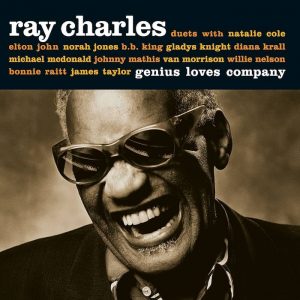
“The Genius”
Often regarded as a forefather of rock’n’roll, Ray Charles discounted the influence of his music throughout his life. “I’ve never given myself a lick of credit for either inventing [rock’n’roll] or having anything to do with its birth,” he wrote in his autobiography. In regards to his position as the “Father of Soul”, he once said: “Maybe I put two things together that hadn’t been together before, but hell… it came from before me, way before me.”
Unlike Chuck Berry or Elvis Presley, Charles’ specific contributions to rock’n’roll are harder to pinpoint and yet more ubiquitous. The basic vocabularies of rock and soul are plainly evident in the way he fused R&B, gospel, jazz and country into a grander whole on his mid-’50s recordings. Perhaps Charles’ greatest contribution was his egalitarian view of American music and his steadfast refusal to remain content behind the walls of specific genres and styles. In the final summation, what made Ray Charles “The Genius” wasn’t only his talent or intelligence, but the unerring and crystal clear musical vision that he brought to every note that he played.
Enjoy this article? Check out Fats Domino – Walking to New Orleans






